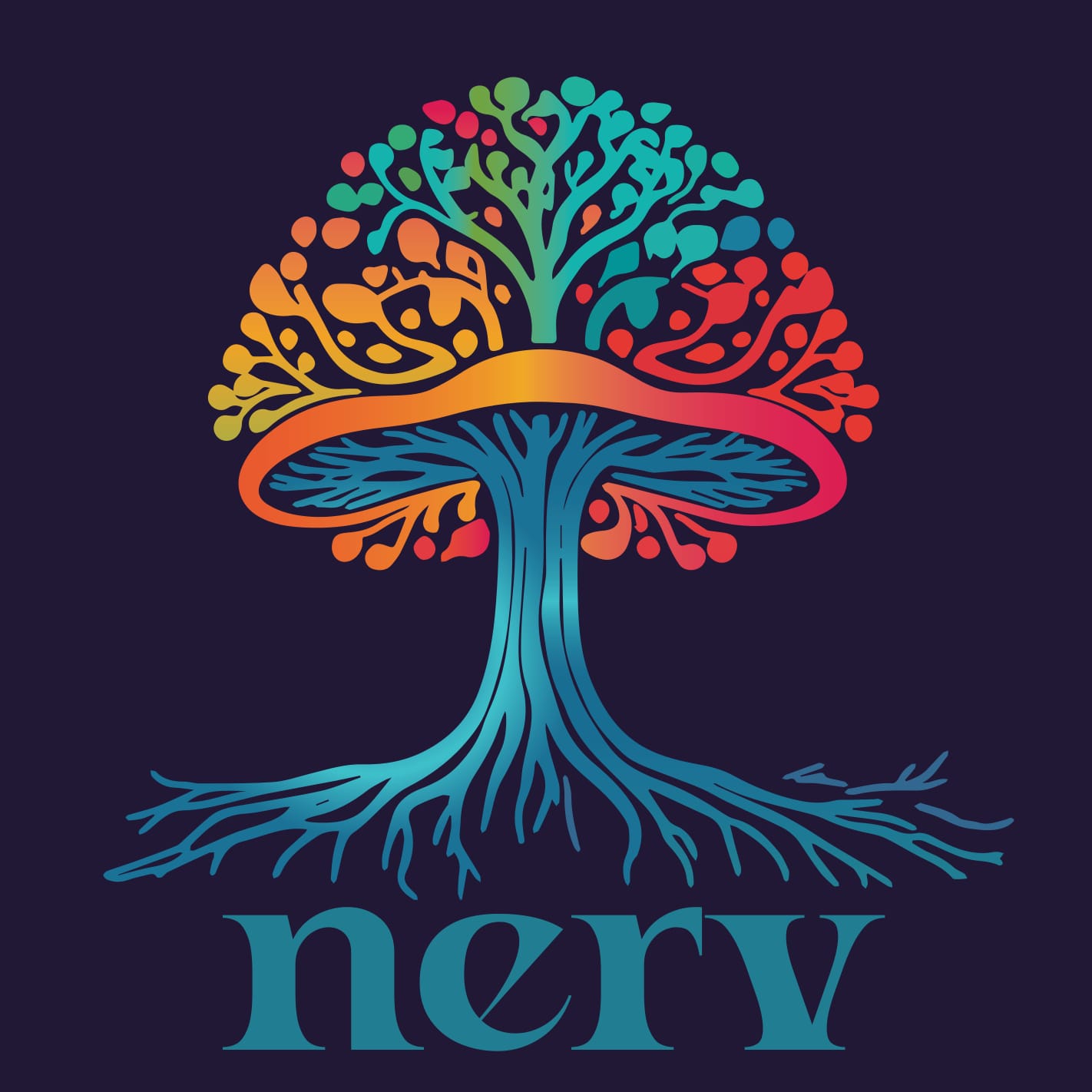Mush Love for Mycelium, the Underground Root-like Structure of Fungi
Mushrooms touch every aspect of our society from politics to science to pop culture to the more than human world. The more I learn about fungi, the deeper and more connected my life becomes.

Hey, what's up Mycelial Friends!
Hi, I'm Ryan, and is a newsletter about mycelium, mushrooms, and all things fungi. Each newsletter features stories about mycology, climate resilience, and personal mushroom writing and/or graphic novel panels from me.
Mushrooms touch every aspect of our society from politics to science to pop culture to the more than human world. The more I learn about fungi, the deeper and more connected my life becomes.
If you like this newsletter share it with a myco-friend or subscribe! You can also find my upcoming Nerv podcast on Spotify, YouTube, and iTunes!
New Rocky Mountain Graphic Novel Panels
I am working on a new graphic novel story: Rocky Mountain Mycelium. I published a few panels in the Rocky Mountain Fungi newsletter. This web comic a follow-up to Parking Lot Fungi, that I shared a few months ago.
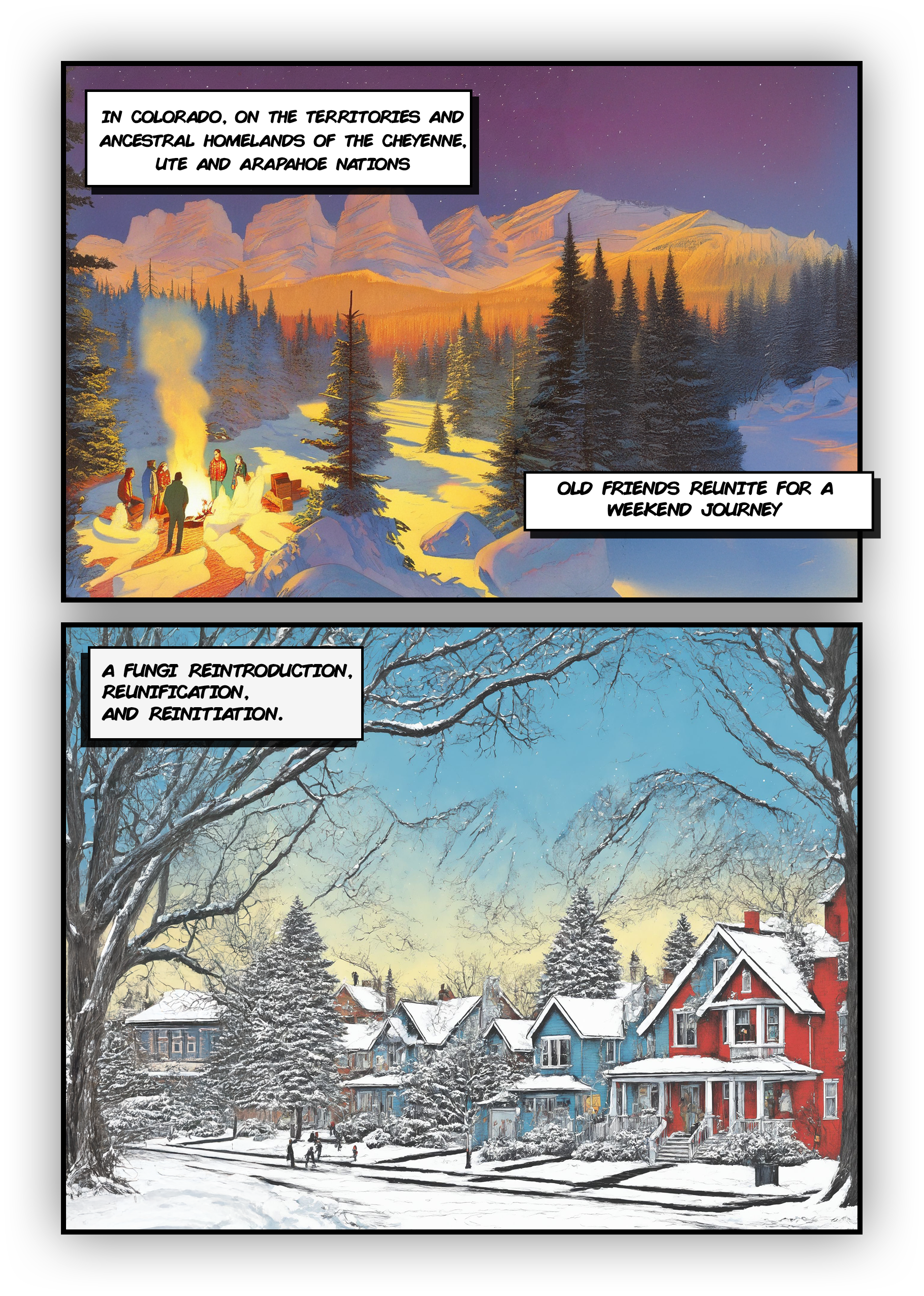
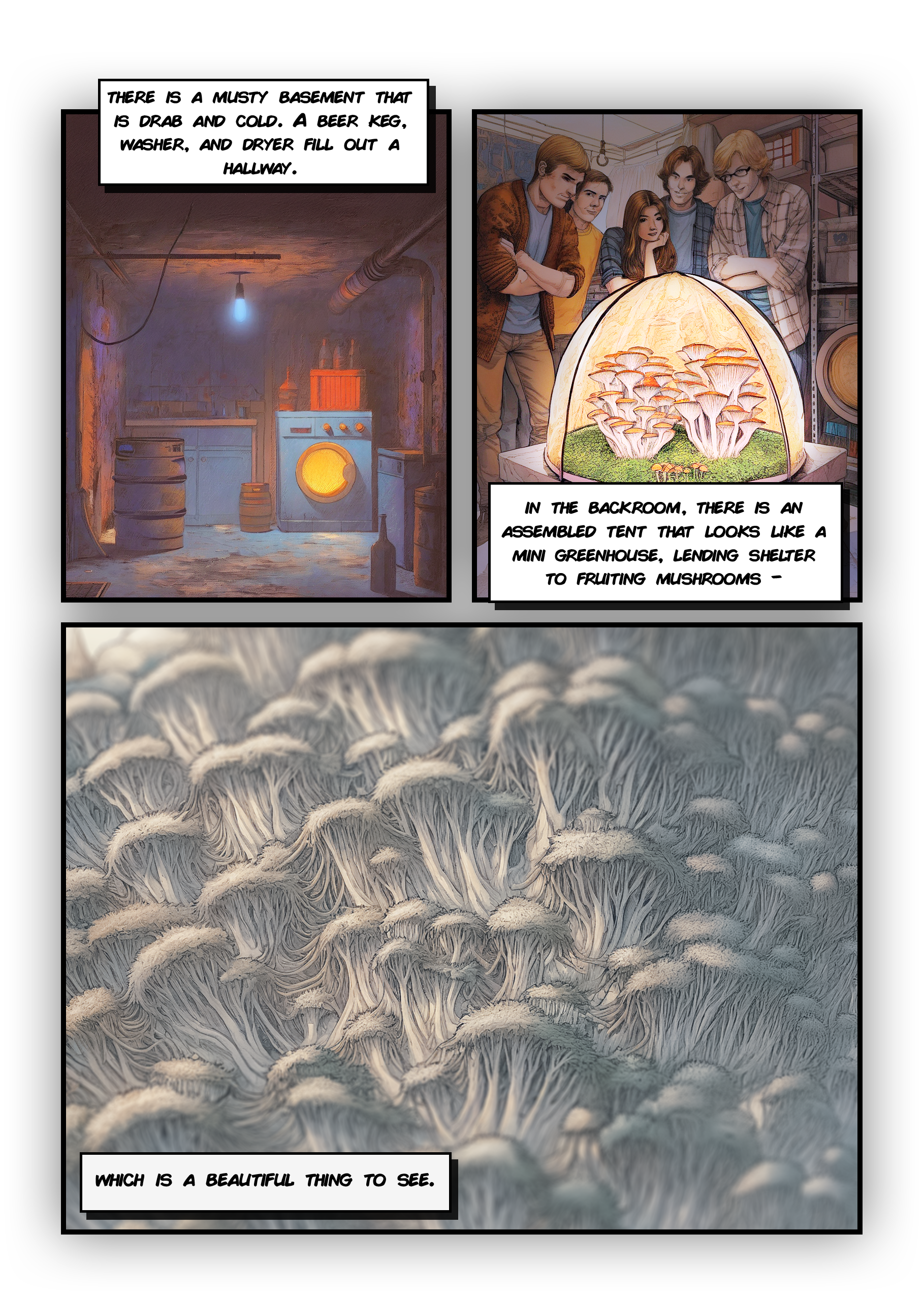
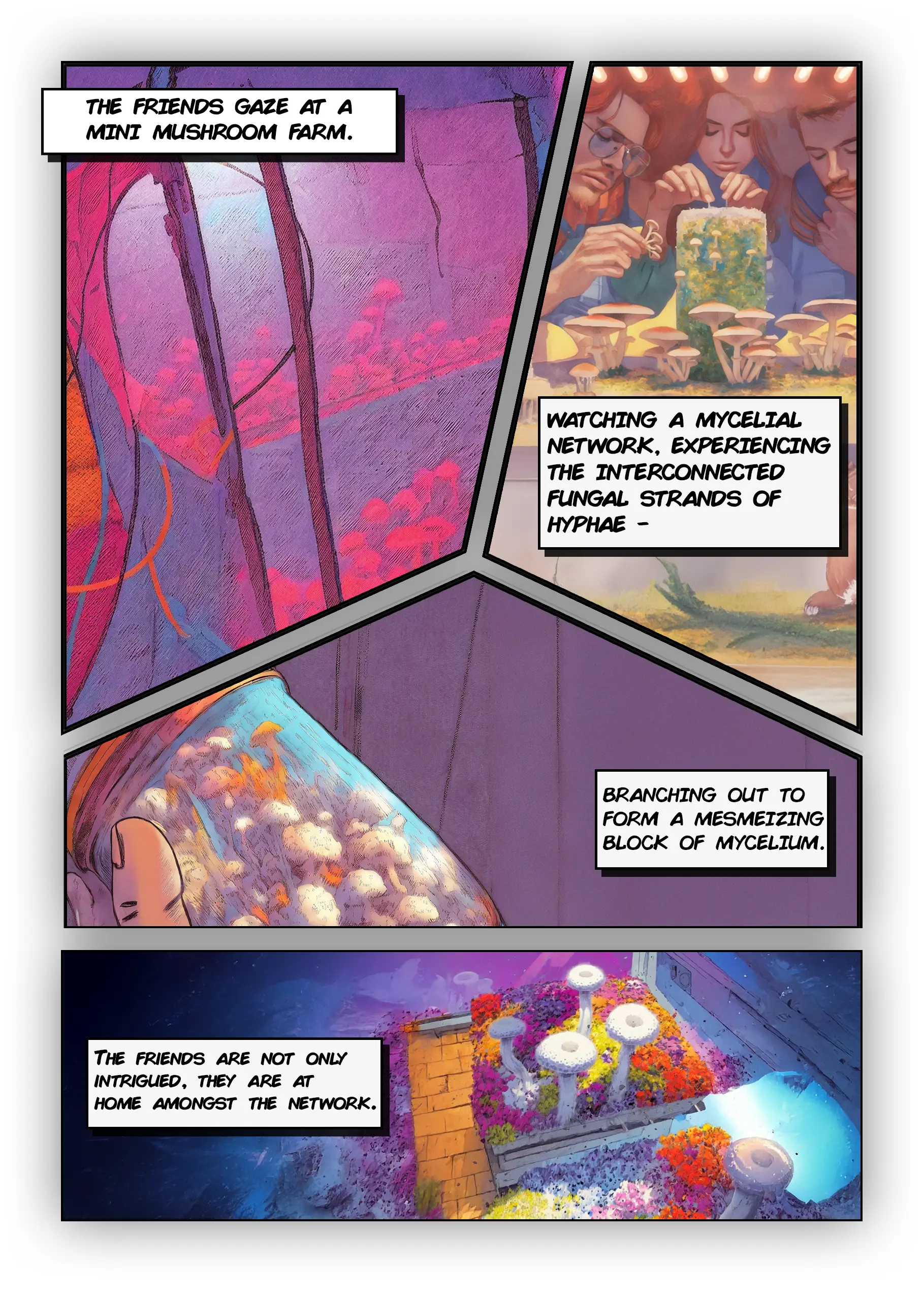
Mush Love for Mycelium, the Underground Root-like Structure of Fungi
It’s safe to say that I’d be dead without working with mycelium. Mycelium is a mushroom’s underground root-like structure, composed of hyphae, the microscopic filament that forms mycelium.
As Radical Mycology author Peter McCoy says: "Mushrooms are the great decomposers, turning old systems into new ones."
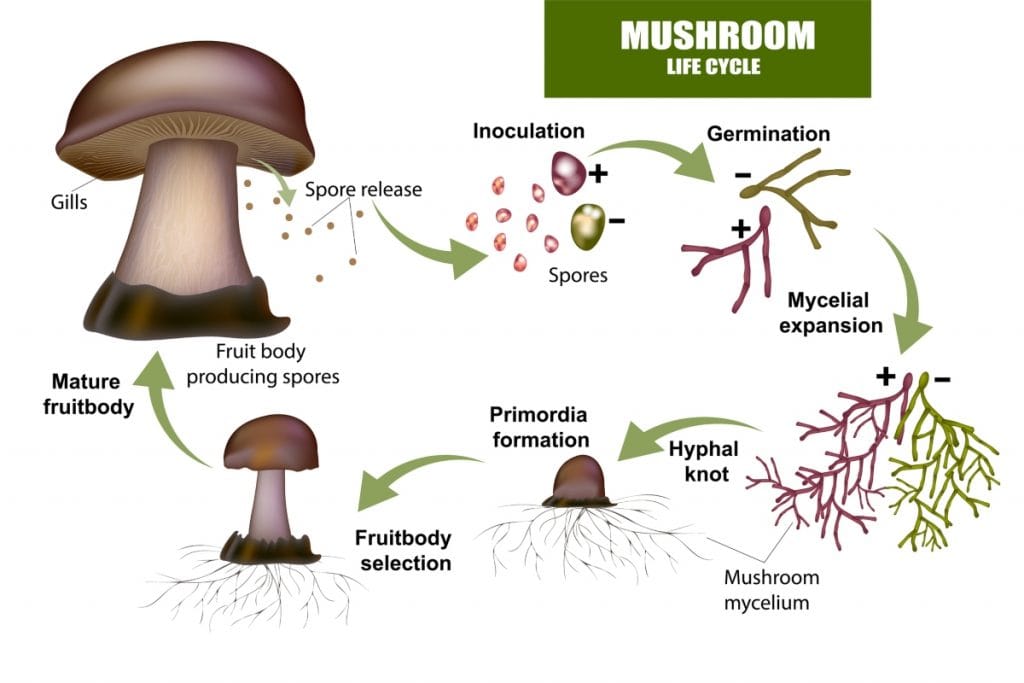
Mycelium is adaptive and resilient growing in many different environments. The mycelium acts as a teacher, mentor, and guide in my life. I used to keep my mycelial work a secret from my immediate family, friends, and loved ones. Now I don't.
Mycelium is my more-than-human friend—they are my guide from nature. I have faith that when things are difficult with human beings, my mycelial network friends will help soothe my soul. Mycelium has taught me that we are all interconnected. We are all greater as a sum of our parts, rather than working alone as individuals.
Branching out from the Wood Wide Web
We can branch out from the vast underground network of mycelium that connects forests called the “Wood Wide Web.” In cultivating, growing, and ingesting all types of mushrooms, we become extensions of mycelium. Scientist Suzanne Simard’s visionary fieldwork traces the connected networks of forests back to fungal connections.
In her book Finding the Mother Tree, Simard’s groundbreaking research compares the mycorrhizal network to the internet, the World Wide Web, with trees transferring energy, food, and nutrients underground through mycelium.
This decentralized intelligence, inherent in both nature and humanity, offers a forceful lesson: we are stronger together, united by invisible threads of connection.
Mycelium stitches life on Earth together
In Entangled Life, Merlin Sheldrake beautifully describes mycelium as “the ecological connective tissue, the living seam by which much of the world is stitched into relation.”
Mycelium teaches us about collaboration, communication, and shared vision.
Like the fungi beneath the forest floor, we thrive when we work together, when we communicate openly, and when we pursue common goals. As a citizen scientist, I have seen firsthand how fungi have helped shape my life. I am grateful for the fungi queendom’s mentoring of me through the ups and downs of being human.
Whether it’s ancestral healing, mycology, breathwork, liberation, or dreaming, partnering with fungi is the main path forward to help heal ourselves, our communities, and Earth.
A hypha is a filament tissue that is the building block of the mycelial web. After a fungal spore germinates, a hypha is born into the world. Seeking food, oxygen, and water, a hypha begins to form into many hyphae, and then into a larger system of underground mycelium.
In what David Abram calls “the more-than-human world" we can partner with fungi, we become hyphal tips, looking to collaborate with other systems of life on the planet. We break away from our human dominance to become keepers of Mother Earth, helping fungi create new forests in a multi-species collaboration.
Fungi are Earth’s great decomposers, feeding on dead organisms to turn organic matter into soil. When humans work with fungi, we learn how to break down and decompose our own human belief systems filled with dominance and isolation.
We are all interconnected
Mycelium fosters a greater sense of community, mentoring us to work in tandem with the fungal queendom. Mycelium have trained me to live in an interdependent world with all earthbound organisms.
All human beings can branch out from the mycelial network to become fungal super heroes, embracing nature’s force to become protectors and guardians of Earth.
Mycelium can teach humans how to become less estranged from the rest of nature.
This is what Robin Wall Kimmerer calls “species loneliness—a deep, unnamed sadness stemming from estrangement from the rest of Creation, from the loss of relationship.”
Mycelium is restoring the natural order of Mother Earth
As many of us know, we are in the midst of a sixth planetary mass extinction, driven primarily by human behavior. Mycelium helps us to heal ourselves, our species, and the planet itself.
Mycelium are storytellers, with the history of Earth encoded in their DNA. Translating our elder fungi siblings’ stories from the interconnected mycelial web is imperative to our own species’ survival on Earth.
In collabing with mycelium, we can thrive like above-ground trees, connecting through a shared underground mycorrhizal network, exchanging nutrients, food, water, and minerals.
Practicing biomimicry, which is learning from nature to mimic natural solutions to solve our common problems, we can design a better system of living, decomposing systems like capitalism as we know it.
I’m grateful that I’m awake and present enough in my body to tell this magical story of aliveness, survival, and opening up my own reality.
The entire mycelium network helped me in my journey. When I ingest mushrooms, I combine my intelligence with theirs. I tap into the shared mycelial network, and they help me cultivate my own sense of self. I sometimes see beautiful visions, where I am dancing in the most visually stunning backdrop I’ve ever seen.
The mushrooms share with me that humans are all a collective, with a combined living experience, a fully integrated human living system—in other words, a human mycelial network.
Sometimes, the visuals are raw. They break my denial about my fragmented human experience and disconnection from my fellow humans. After eating mycelium, I once closed my eyes to see and feel images where I am living through the horrors of a concentration camp, trapped, losing weight, and incarcerated.
I acknowledge this visual as Bob Marley’s reggae song “Three Little Birds” plays in the background, telling me that “Every little thing gonna be alright.”
I develop empathy for myself, my loved ones, and even those who have harmed me in the past. Mushrooms give us a language to discuss difficult topics in a healthy and mature way.
Mycelium is an intelligent and spiritual guide
Our human mycelial network connects us to nature, giving us space to grow up outside of the systems of human-based capital. Together, we can come of age as a species, caring for our collective human well-being.
We can branch out from the collective mycellium intelligence to connect us to our shared human and fungal mission of caring for Mother Earth.
I have realizations from mycelium where I see humanity as an intricate mycelial network.
With mycelium, I weep about my childhood, grieving for my lost inner child, who didn’t get the support that he needed, wanted, or deserved. With mycelium, I feel a oneness with the land, waterfalls, rain forests, and all of Mother Earth.
There is an aliveness in the natural world, and I’m plugged into it all. I am connected to the fuana, flora, and fauna. For that, I’m grateful. Without this connection to the mycelial community, I’m certain I would not be alive today. To say that fungi saved my life is the truth.
So, the next time you encounter a mushroom, remember the vast network it represents. Whether you grew up mycophobic, fearful of mushrooms, or mycophilic, fond of mushrooms, let it remind you of the mycelial network, the intricate web of relationships and shared experiences that define our existence.
Imagine for a moment that humans are like mycelium, each of us a vital node in a vast, decentralized network. Our first connection to this network begins at birth, as we draw our first breath and join a family unit.
This family, with its genetic codes and learned behaviors, becomes our initial mycelial network. Fungi once taught plants how to root into the soil, and now fungi are teaching humans how to root into the ecosystems of Earth.
Humans can protect the planet from harm, nourish the land with care, and love the entire system of life. We can embrace this collective intelligence, for in doing so, we will find a deeper connection to ourselves, to others, and to the world around us.
Whether it’s our breath, our actions, or our connections, we are all part of this beautiful, mycelial dance of life. As we navigate our paths, let us honor the wisdom of mushrooms and mycelium, finding strength in our shared beingness and the endless possibilities it offers. These reasons and many more are why I have much love for mycelium.
